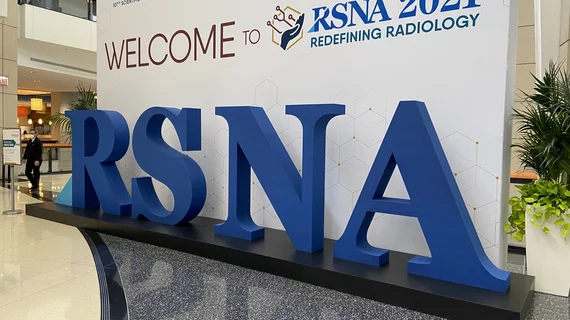Some states have 25% fewer radiologists than Medicare patients, illustrating nationwide trend
The population of Medicare beneficiaries has outpaced the number of radiologists entering the workforce over recent years, leaving some states with nearly 30% fewer providers compared to patients who demand imaging services.
U.S. census data from last year shows the 65-and-up population grew by 15 million since 2010, compared to a smaller 2.5% jump in diagnostic radiology trainees entering the workforce during that same time period.
“From these two points we can begin to ask some deeper questions about the supply and demand of radiology to this population,” Aditya Khurana, MD, an incoming radiology resident at the Mayo Clinic in Rochester, Minnesota, explained Wednesday morning during the RSNA annual meeting.
For answers, Khurana turned to Medicare Part B claims data and imaging service figures taken from the Kaiser Family Foundation—each spanning 2012 through 2018.
Both diagnostic radiology and the population of Medicare beneficiaries grew during the study period (4.4% and 7.4%, respectively), which has led to a national supply and demand mismatch for radiologist labor of about 3%.
Looking at geographic differences in these growth rates, however, reveals that many regions are struggling with steeper supply and demand issues.
Across the West, for example, the rise in Medicare beneficiaries has outpaced rads by 10.1%. But in the South, diagnostic radiologists are more prevalent (3.4% mismatch rate). The Northeast has 0.9% more Medicare participants than rads while the Midwest is almost even at a 0.1% surplus of radiologists.
At the state level, Hawaii boasted the largest undersupply of radiologists at 26.7%, while Minnesota had a 28.5% oversupply compared to their Medicare population.
Importantly, some regions and states, such as Alabama, saw growth in both categories but, as is the case here, the sharp rise in the number of Medicare beneficiaries (10.8%) overshadowed the steady rise in radiologists (3.4%), leading to a rad supply shortage.
Khurana, who won the Medical Student Trainee Research Prize for his work, said he is planning to extend his analysis to DBT-level mismatches between urban and rural populations. He noted his current results should be useful for forecasting future workforce trends.
“This state-level data offers a baseline for future studies and can allow for even more questions using other data,” Khurana added during the session. “Once areas of undersupply are identified we can start to prepare for the future and make sure that these areas aren’t forgotten in the next wave of clinical radiology.”

